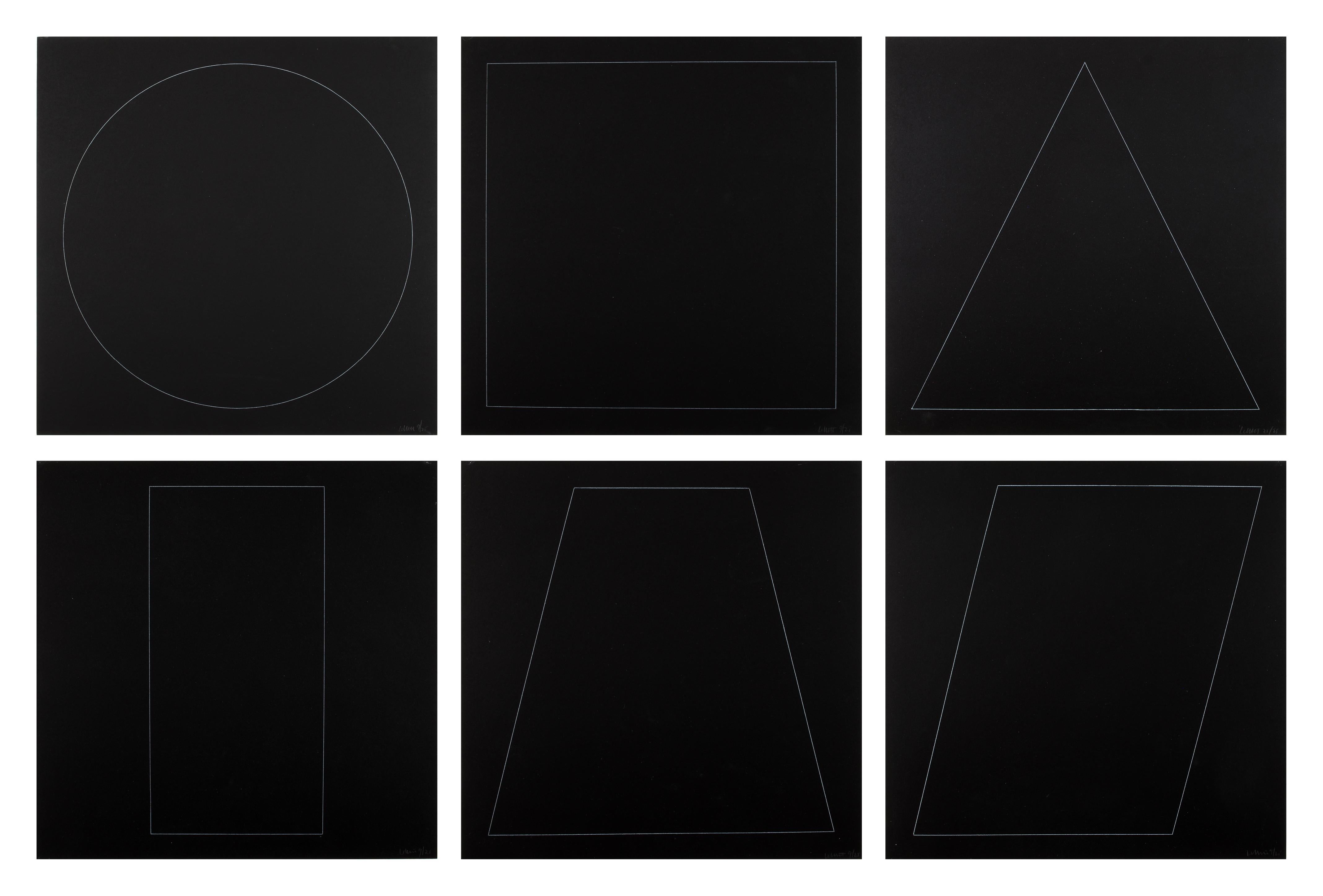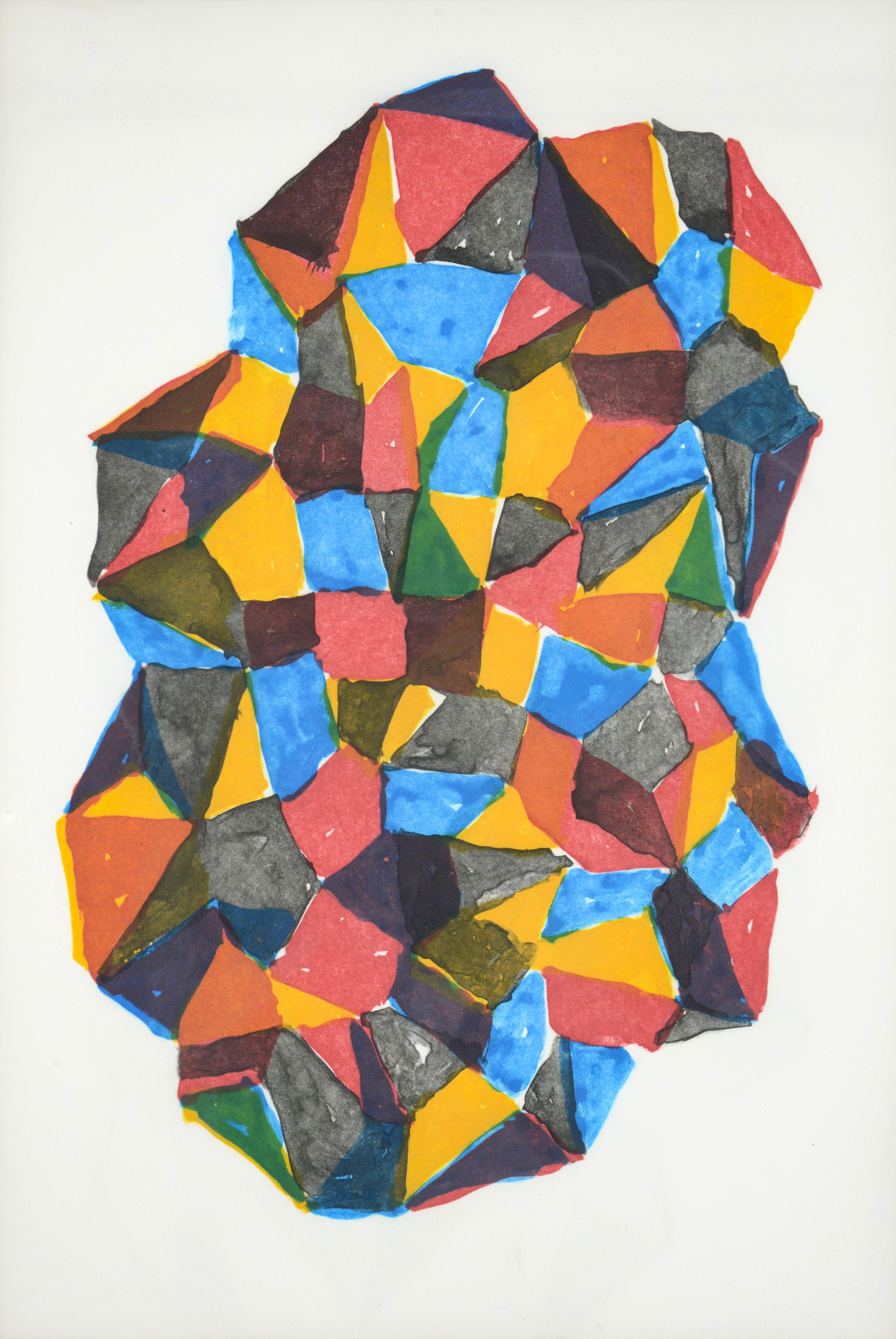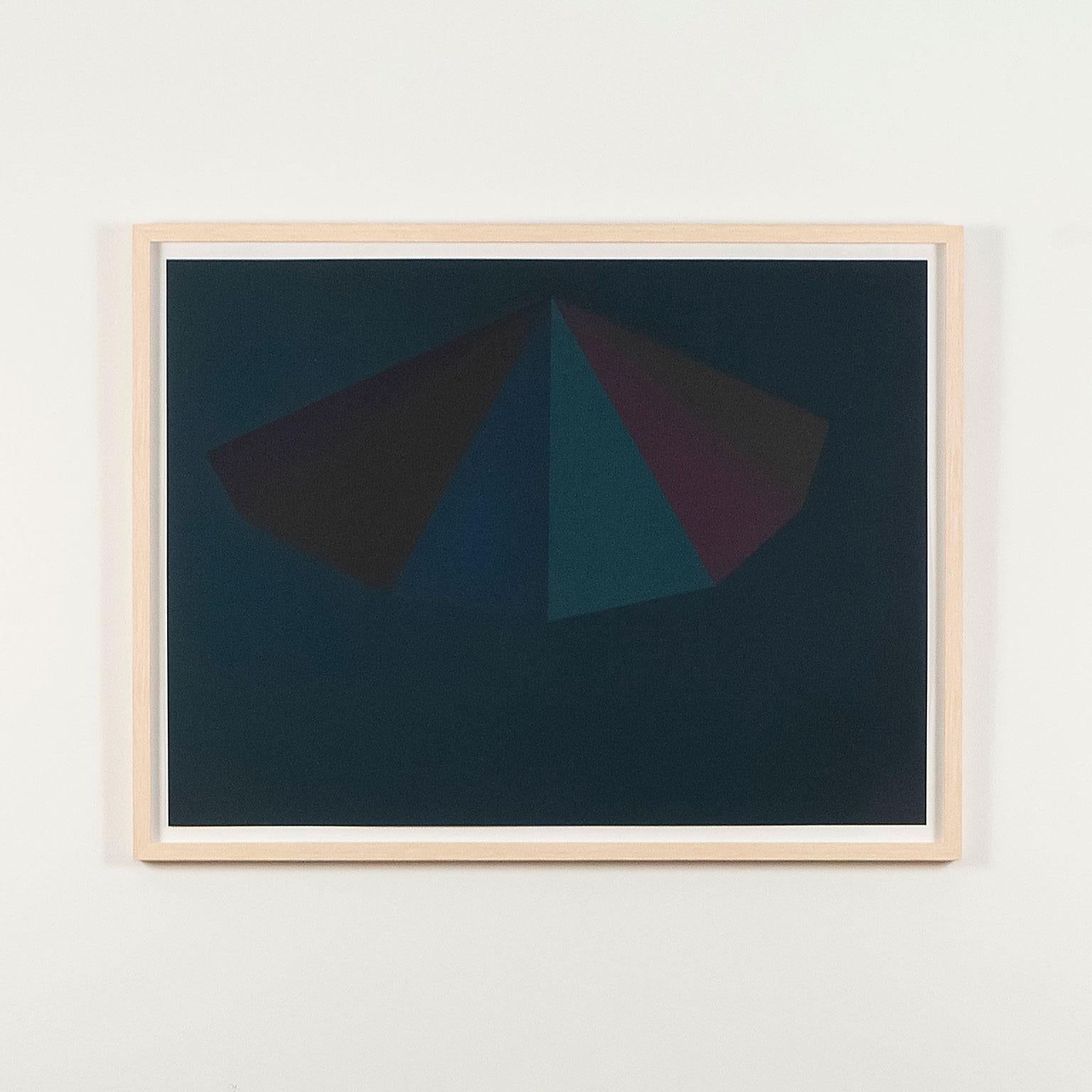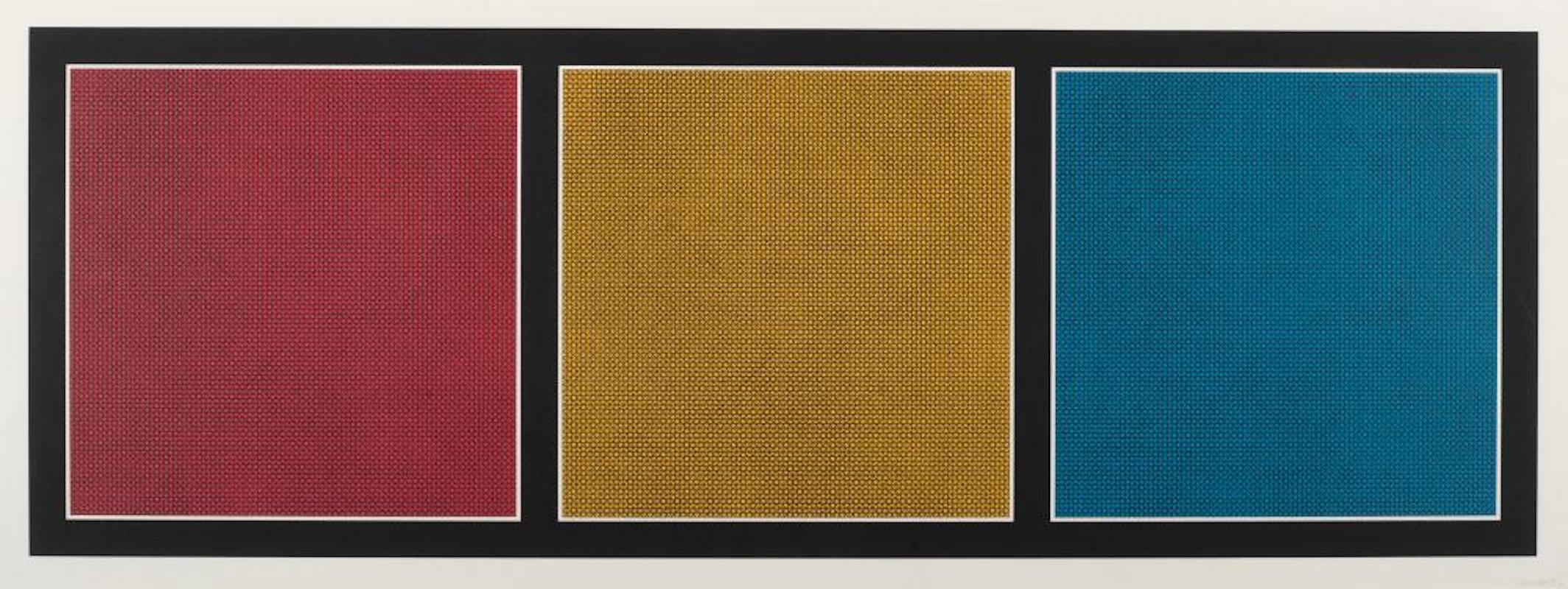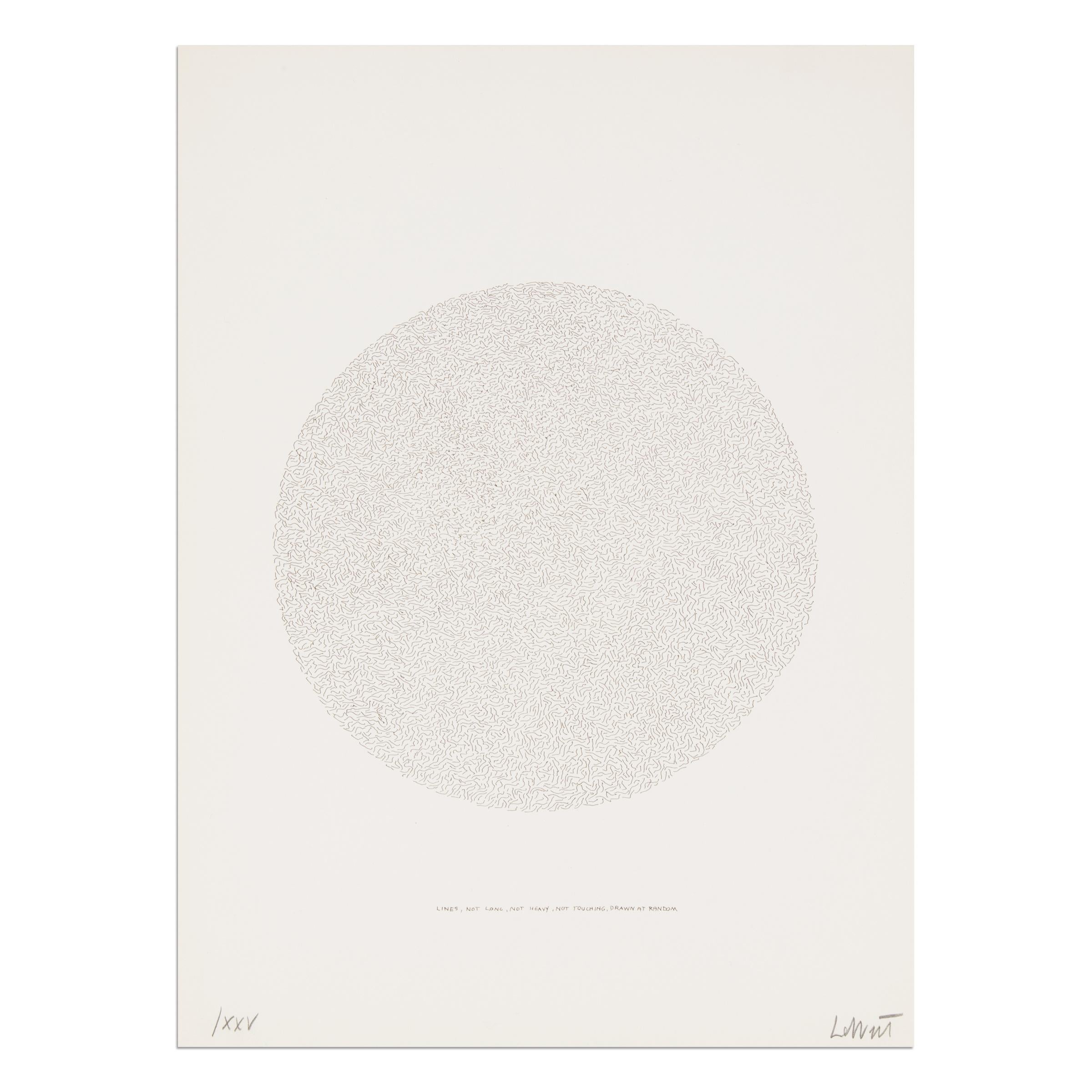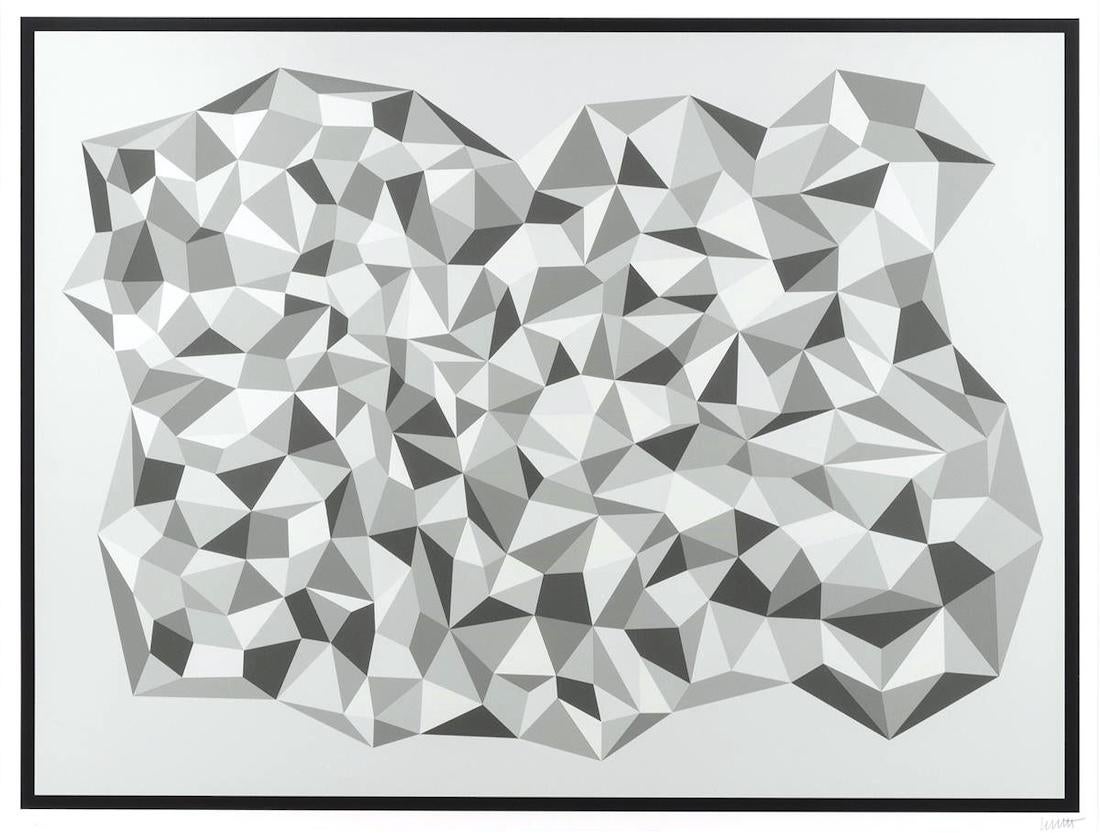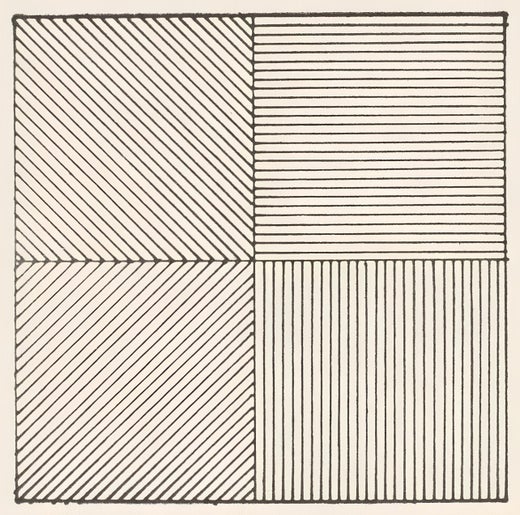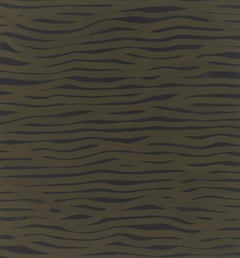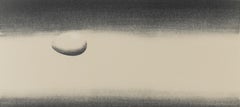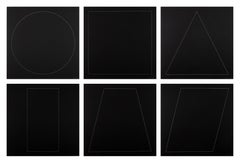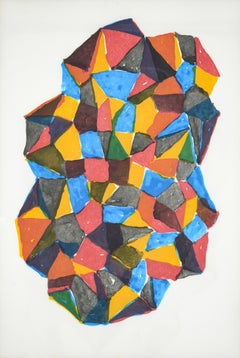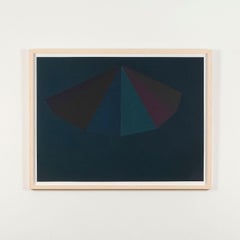Sol LeWittA sphere lit from the top, four sides and all their combinations2004
2004
About the Item
- Creator:Sol LeWitt (1928 - 2007, American)
- Creation Year:2004
- Dimensions:Height: 24 in (60.96 cm)Width: 35.875 in (91.13 cm)
- Medium:
- Movement & Style:
- Period:
- Condition:
- Gallery Location:New York, NY
- Reference Number:1stDibs: LU932314216462
Sol LeWitt
While New York City’s art scene in the 1950s and ’60s revolved around Abstract Expressionism, multidisciplinary artist Sol LeWitt paved an alternative path, creating a prolific output of work in the genres of minimalism and, later, Conceptual art.
While LeWitt is perhaps best known for his immense “wall drawings,” he created work in a wide range of media, including drawing, painting, printmaking and sculpture. (However, in a characteristic rebuttal of canonical art history, he referred to these pieces as “structures.”) He also produced several texts, including the seminal Sentences on Conceptual Art (1969).
Born in Hartford, Connecticut, in 1928, LeWitt received a BFA from Syracuse University before going to work as a graphic designer for the renowned architect I.M. Pei. He would later work at the book counter at the Museum of Modern Art, where his colleagues included fellow artists. LeWitt’s early exposure to architecture may well have had outsize influence on his subsequent career: He was known for the geometric nature of his work, specifically his fastidious, near-obsessive treatment of the cube, which he rendered repeatedly in various ways throughout his paintings, structures and wall drawings.
In the 1960s, LeWitt showed in several group exhibitions throughout New York and also began to experiment with three-dimensional structures, most modular riffs on the cube shape. His work was included in “Working Drawings and Other Visible Things on Paper Not Necessarily Meant to Be Viewed as Art,” curated by Mel Bochner, another leading exponent of Conceptualism.
Later, LeWitt debuted his now-iconic wall drawings, creating work directly on the walls of galleries and show spaces, beginning with pioneering gallerist Paula Cooper’s inaugural show in 1968. The wall drawings became a prime example of LeWitt’s philosophical approach to art, with their installation often carried out by museum staff or curators following precise instructions from the artist.
“The idea,” the artist once said, “becomes a machine that makes the art.” LeWitt continued to produce work until his death in 2007.
Find a collection of original Sol LeWitt art on 1stDibs.
- ShippingRetrieving quote...Shipping from: New York, NY
- Return Policy
More From This Seller
View AllEarly 2000s Contemporary Drawings and Watercolor Paintings
Paper, Gouache
1970s Contemporary Drawings and Watercolor Paintings
Lithograph
Early 2000s Contemporary Color Photography
C Print
Early 2000s Contemporary Color Photography
C Print
Early 2000s Contemporary Color Photography
C Print
Early 2000s Contemporary Still-life Photography
Silver Gelatin
You May Also Like
1970s Prints and Multiples
Etching, Aquatint
1980s Conceptual Abstract Prints
Paper, Etching, Aquatint
1980s Abstract Geometric Abstract Prints
Screen
20th Century Abstract Geometric Abstract Prints
Lithograph
20th Century Abstract Abstract Prints
Lithograph
Late 20th Century Abstract Prints
Screen
Read More
Lori Grinker’s Artful Photographs of a Young Mike Tyson Are a Knockout!
The New York photographer tells us how an encounter with the then-13-year-old boxer led to a decade-long project that saw them both go pro.
In Marc Yankus’s Photos, New York Landmarks Are Pristinely Devoid of People
A new exhibition at Manhattan's ClampArt gallery shows off the artist's portraits of urban architectural icons.
